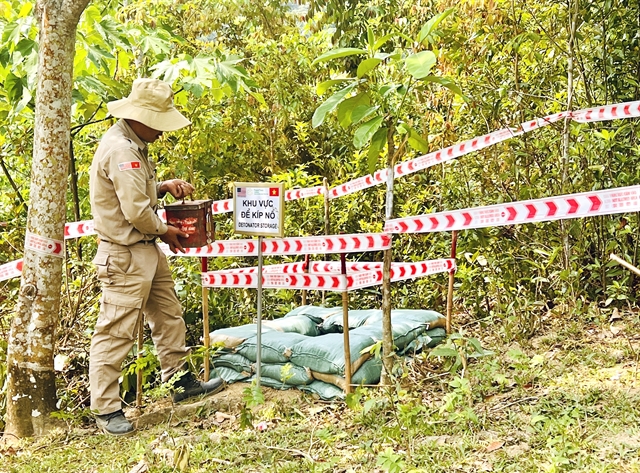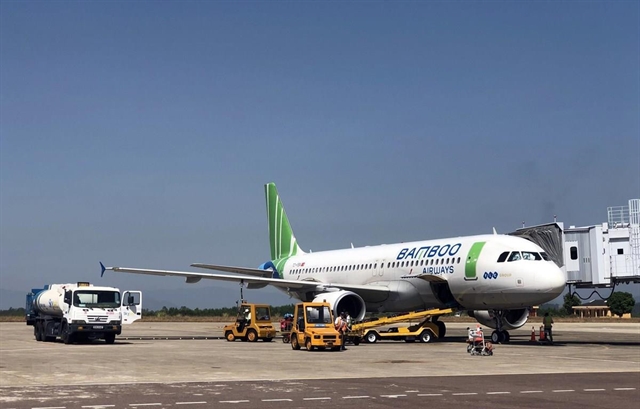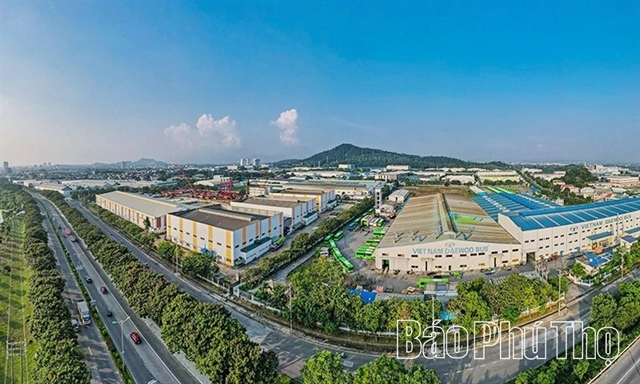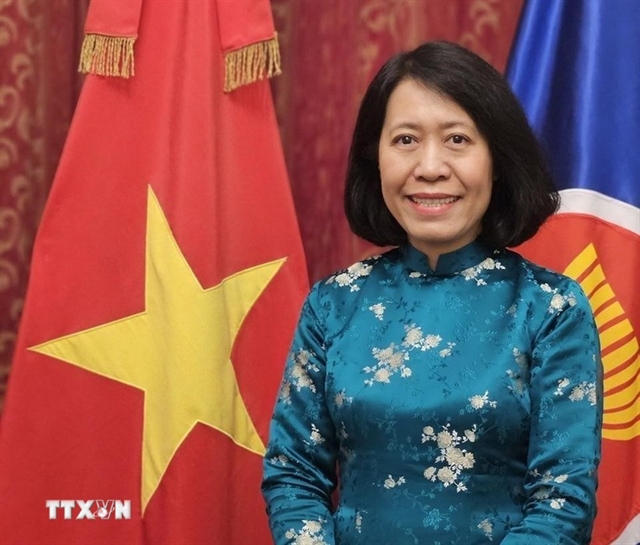 Society
Society

 |
| A detonation site of the US-based mine action organisation PeaceTrees Vietnam in Hướng Hóa District, Quảng Trị Province. — VNA/VNS Photo Nguyên Linh |
QUẢNG TRỊ — After nearly 30 years of international cooperation for unexploded ordnance (UXO) removal, the central province of Quảng Trị has become a model for addressing the consequences of war.
Quảng Trị is among the localities which bore the heaviest burden of the war, with unexploded devices impacting approximately 80 per cent of its total area.
These residual explosives continue to pose a major threat to the safety of the local people in their daily lives. They also hinder the province’s socio-economic development.
Following the national reunification victory in 1975 until now, UXOs have injured 5,271 people and killed 3,369 in Quảng Trị. Nearly half of all landmine accidents in the province occurred when locals were working in the fields.
In most cases, the victims are primary breadwinners in their households, leading to devastating losses for their families and communities.
Tragically the province has also recorded that children under 18 have been nearly one-third of all landmine victims, a lack of awareness being attributed as a cause of these tragedies
For decades, Quảng Trị has made efforts to address the consequences of landmines and promote reconciliation. The province was the first to be granted the Government’s approval to cooperate with international organisations in 1996 for demining projects.
To date, Quảng Trị is the only province that has fully implemented all components of a mine action programme, according to international standards.
In recent years, dozens of countries and organisations have supported Quảng Trị in removing the unexploded mines, with the US emerging as a key supporter.
Since 1996, the US government has supported various programmes and projects through various NGOs. The budget for mine action programmes and projects has amounted to approximately US$104.8 million.
Currently, organisations such as the UK-based Mines Advisory Group (MAG), the Norwegian People’s Aid (NPA), and the US-based PeaceTrees Vietnam (PTVN) are collaborating to implement demining survey and clearance projects, with funding from the US government.
The Chief of Programs for Weapons Removal and Abatement under the US Department of States, Jerry Guilbert, has viewed the province as a model for success, for not only Việt Nam and Southeast Asia, but also the entire world.
The US-funded mine action programmes play an important role in reducing UXO risks, clearing land for local livelihoods, ensuring safety for local communities and supporting people with disabilities (PWDs). These programmes have also created jobs for more than 1,000 local workers.
According to Quảng Trị Steering Committee for Mine Action, cooperation programmes with the US have achieved significant results, contributing greatly to poverty reduction and socio-economic development in the local area.
These programmes and projects have cleared about 260 million square metres of mine-contaminated areas, and significantly raised public awareness of UXO risks.
Notably, an education programme has been incorporated into the curriculum for primary and secondary school students, helping to reduce the annual average of UXO incidents from 60 between 2006 and 2010, to just two between 2020 and 2024.
What differentiates the international cooperation programmes for post-war mine clearance in Quảng Trị Province from others is that they are integrated, rather than carried out individually.
Their activities include risk education, mobile clearance, demining operations, arranging resettlements in areas cleared of UXOs, functional rehabilitation, community reintegration and livelihood support for PWDs.
They are also implemented in conjunction with poverty reduction efforts and local socio-economic development plans.
The province also established Quảng Trị Mine Action Center (QTMAC), the first and only coordinating unit for UXO clearance at the provincial level in the country. The centre is an innovative initiative that helps optimise collaborations between foreign NGOs involved in the mission.
In Quảng Trị, the estimated area contaminated by cluster munitions (a high-risk explosive weapon) is 61,946 hectares. Of that, 37,705 hectares have been cleared and more than 830,700 explosive devices were handled.
Under the coordination of QTMAC, from 2015 to April 2023, the NPA completed surveys of cluster munitions traces in all accessible areas of Quảng Trị, identifying 1,270 dangerous areas.
The survey results provide stakeholders with an overall view of the mine and explosive contamination situation in the province and support effective disposal planning.
According to QTMAC, the locality aims to be the first in the country to be 'safe' from the impact of post-war UXO and explosive materials.
This goal is not the complete clearance of all UXOs, but rather the completion of surveys and mapping of at-risk areas for monitoring.
It also strives to ensure that 100 per cent of the population is equipped with knowledge and provided support services, to live and work safely, reducing accidents caused by UXOs.
Accordingly, the most dangerous types of UXOs will be handled, and high-risk contaminated land with use demand will be prioritised for clearance, while the remaining areas will be processed according to demand priority.
Deputy Chairman of Quảng Trị People’s Committee Hoàng Nam said that the province hoped to receive continued support from the US government in mine action programmes to achieve this goal in 2025.
During the recent visit to Quảng Trị on April 2, US Ambassador to Việt Nam Marc E. Knapper affirmed that the US will continue to support Việt Nam, and Quảng Trị in particular, in addressing war consequences based on respect for the past and focus on a prosperous future. — VNS




